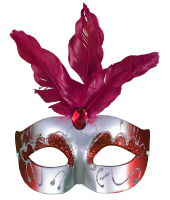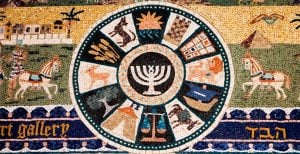The next holiday in the Jewish calendar is Purim. It has everything: a gripping story, fabulous costumes, delicious food and engaging, exciting customs and commands. Here’s everything you need to know about Purim:
There are four official Purim mitzvot – commandments. They are:
1) Megilla The megilla is a special scroll on which the Purim story is written. We listen to the story, which is sung to its own special melody, twice through the holiday: once at night, and again in the morning. There are unique customs associated with reading this scroll – we use noisemakers to drown out the sound of the villain’s name; there are sections which use tunes borrowed from other Biblical stories; the whole congregation sings certain parts along with the Rabbi or leader.
2) Mishloach manot We give gifts of food to friends. The Talmud specifies that everyone should give two ready-to-eat foods to one friend – but many people send packed gifts baskets to as many friends as they can.
3) Matanot le’evyonim We give gifts of either food or money to the neediest members of our community, ensuring that everyone can eat and enjoy the holiday. It’s a powerful way to teach children that even when we’re happy and celebrating, it’s important to think of those who are less fortunate than ourselves.
4) Mishteh (Aramaic for the Hebrew seudah or mean) – Purim follows the mantra of many Jewish holidays: they tried to kill us, we won, let’s eat! We indulge in a special feast to celebrate our national survival. Purim epitomizes the age-old adage to eat, drink and be merry: we eat a decadent meal stretching long into the night and drink (at least) enough to forget the difference between the heroes and villains of the Purim story.
Other fantastic Purim traditions include:
Dressing up God’s name doesn’t appear anywhere in the Purim story, leading people to say that He was hidden. This gave rise to the custom of us “hiding” behind elaborate masks and costumes. This is now the highlight of the holiday for kids (and adults!) everywhere. Some stores in Israel open especially to sell costumes, and Jewish schools world-over have costume parties as part of their Purim festivities.
Hamentaschen A favorite Purim treat, hamentaschen are biscuits or pastries folded into triangles and stuffed with all manner of tasty fillings. Classics include poppy seeds, dates, and chocolate.
Communal charity projects Many innovative Jewish charities have seized on Purim’s command to give matanot le’evyonim (literally, gifts to the poor) and run huge community drives on Purim morning. Activities may include busking with special Purim performances, door-to-door collecting with Purim songs (kind of like caroling), and placing collection boxes for food donations in kosher stores. Contact your local Jewish community for ways to get involved and give back this Purim!
Purim challah It’s customary to start the Purim seudah with challah, just like every other festive meal. In keeping with the bright, colorful themes of the day, we use special Purim challah instead of regular bread. These are special, large loaves which are filled with delicious extras like chocolate chips, painted with a sticky honey or sugar glaze and topped with sprinkles or chopped nuts.












